The ancient civilizations of Mesoamerica were filled with rich and vibrant mythologies, populated by a wide array of unique and fascinating creatures. From the mighty serpents that soared through the skies to the monstrous beings that lurked in the depths of the waters, these mythical creatures hold a special place in the folklore of the Aztecs, Maya, Olmecs, and Zapotecs. In this article, we will delve deep into the enchanting world of Mesoamerican mythology, exploring the captivating tales and legends surrounding some of the most iconic creatures that once roamed the lands of Central America. So prepare to embark on a journey of wonder and discovery, as we unravel the mysteries of these ancient civilizations and the fantastical beings that captured their imaginations.
Contents
- Aztec Mythology
- Maya Mythology
- Olmec Mythology
- Zapotec Mythology
- Conclusion
-
Frequently Asked Questions
- 1. What is the significance of Quetzalcoatl in Aztec mythology?
- 2. Why was Cipactli considered a significant creature in Aztec mythology?
- 3. What role did Xolotl, the Dog-headed God, play in Aztec mythology?
- 4. Are feathered serpents only found in Aztec mythology?
- 5. Did the Aztecs believe in other mythical creatures besides those mentioned?
- 6. Were these mythical creatures worshipped by the Aztecs?
- 7. Is there any archaeological evidence supporting the existence of these creatures?
- 8. How did the Aztecs pass down their mythology and stories?
- 9. Can we find references to Aztec mythology in modern culture?
- 10. How does Aztec mythology differ from other Mesoamerican mythologies?
- References
-
Frequently Asked Questions
- How many mythical creatures are there in Mesoamerican mythology?
- What is the significance of mythical creatures in Mesoamerican culture?
- Are there any Mesoamerican mythical creatures that are still worshiped today?
- What are some common themes among Mesoamerican mythical creatures?
- Can you provide details on Quetzalcoatl, the Feathered Serpent?
- Who is Cocijo, the Rain God?
- What is the role of the Were-Jaguar in Olmec mythology?
- Who is Kukulkan, the Plumed Serpent?
- What is the story behind Camazotz, the Bat God?
- Can you explain the significance of the Earth Monster in Olmec mythology?
- References
- Read More
Aztec Mythology
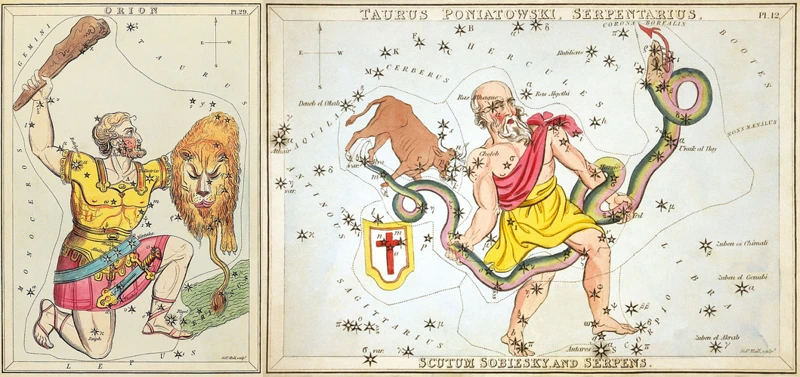
Aztec Mythology was a complex and intricate belief system, steeped in a rich tapestry of gods, legends, and mythical creatures. At the heart of their pantheon stood Quetzalcoatl, the Feathered Serpent. This revered deity was known as the creator god, as well as the patron of learning, arts, and civilization. Often depicted as a serpent with colorful feathers, Quetzalcoatl played a significant role in Aztec cosmology. Another formidable creature in Aztec mythology was Cipactli, the Crocodile Monster. This fearsome beast was a symbol of chaos and destruction, believed to be responsible for the creation of the Earth itself. With its massive jaws and scaly body, Cipactli struck fear into the hearts of the Aztecs, representing the inherent dangers of the natural world. And then there was Xolotl, the Dog-headed God, twin brother of Quetzalcoatl. Xolotl was associated with lightning, fire, and death, often portrayed as a dog-headed figure. He served as the guide of souls to the underworld and played a crucial role in the Aztec creation myth. These mythical creatures were just a glimpse into the vast and captivating realm of Aztec mythology. To fully understand the culture and beliefs of the Aztecs, it is essential to explore the tales and legends that are intricately woven into their folklore.
1. Quetzalcoatl, the Feathered Serpent
Quetzalcoatl, the Feathered Serpent, was one of the most revered and important deities in Aztec mythology. This magnificent creature was often depicted as a serpent with extravagant feathers. Quetzalcoatl held a prominent position as the god of wind, knowledge, and learning. According to legend, he was responsible for creating mankind by breathing life into bones. Quetzalcoatl symbolized the cycle of life and death, and his annual departure and return were believed to bring fertility and agricultural abundance. The Aztecs honored Quetzalcoatl with elaborate rituals and sacrifices, seeking his blessings for a bountiful harvest. In addition to his association with wisdom and creation, Quetzalcoatl was also connected to the planet Venus, which was considered his celestial counterpart. This cosmic bond further elevated his significance in Aztec cosmology. The Feathered Serpent represented a harmonious balance between the earthly and divine realms, embodying the duality found within the Aztec worldview. Exploring the myths and legends surrounding Quetzalcoatl provides a fascinating insight into the spiritual and cultural beliefs of the Aztec civilization. For more information about Native American mythology and its diverse array of spirits and animals, you can visit the link here.
2. Cipactli, the Crocodile Monster
Cipactli, the Crocodile Monster, was a prominent figure in Aztec mythology. This formidable creature was believed to be one of the earliest deities and played a significant role in the creation of the universe. According to legend, Cipactli was a giant crocodile with a fierce appetite for destruction. Its body was composed of various elements, including earth and water. This monstrous being symbolized chaos and the unpredictable forces of nature. The Aztecs believed that the world was created when several gods sacrificed themselves to bring order to the chaos of Cipactli’s existence. Her body was dismembered, and the different parts formed the Earth, the heavens, and other celestial bodies. Cipactli represented the primal essence of the natural world and reminded the Aztecs of the constant struggle between order and chaos. Despite its ferocious nature, Cipactli also held a certain level of respect as a powerful and influential deity. Its depiction can be found in various Aztec artworks and murals, showcasing the significance it held in their beliefs and worldview. Understanding the role of Cipactli in Aztec mythology provides insight into their perception of the universe and the delicate balance between harmony and discord.
3. Xolotl, the Dog-headed God
In Aztec mythology, Xolotl, the Dog-headed God, held a significant role and was revered as the twin brother of Quetzalcoatl. As a prominent deity, Xolotl was often depicted with the head of a dog, symbolizing loyalty and companionship. He played various roles within Aztec cosmology and belief. One of his essential roles was as the guide and protector of souls on their journey to Mictlan, the underworld. Xolotl was responsible for defending the sun from the dangers it faced on its nightly journey through the underworld. The Aztecs believed that Xolotl would lead the sun safely through the perils of the darkness, ensuring the cycle of life and death would continue without disruption. His presence is also seen in the myth of the creation of humanity. According to legend, Xolotl transformed himself into various forms to retrieve the bones of previous cycles of humanity to create the current race. This act represented the idea of continuous rebirth, renewal, and the cyclical nature of life. Xolotl’s significance in Aztec mythology highlights the intricacies and depth of their belief system, where gods were multifaceted and held various responsibilities within the divine hierarchy. To fully grasp the complexity of Aztec mythology, delving into the stories and symbolism surrounding Xolotl is essential.
Maya Mythology
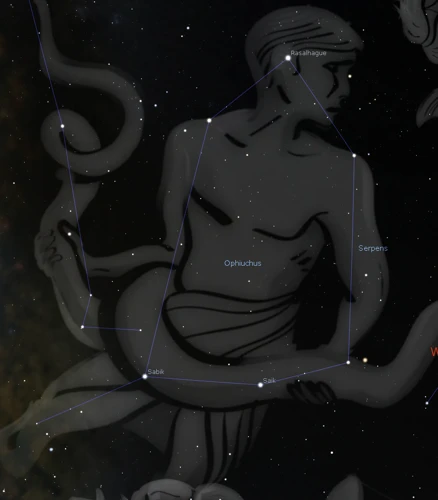
Maya Mythology is a realm filled with captivating stories and enigmatic creatures. One of the most notable figures in Maya mythology is Kukulkan, the Plumed Serpent. This revered deity was associated with many aspects of Maya life, including agriculture, trade, and wisdom. Kukulkan was often depicted as a feathered serpent, with vibrant plumage and intricate scales. Another intriguing being in Maya mythology is Ah Puch, the Death God. Ah Puch was the ruler of the underworld, a dark and foreboding figure often depicted as a skeletal figure adorned with bones and wearing a death mask. His role was significant in Maya cosmology, embodying the cyclical nature of life and death. Additionally, we have Camazotz, the Bat God. Camazotz was a fearsome deity associated with night, sacrifice, and fear. Often depicted as a bat with sharp teeth and claws, Camazotz embodied the mysteries and dangers of the nocturnal world. Exploring the depths of Maya mythology allows us to immerse ourselves in a world where gods and supernatural creatures held immense power and shaped the lives of the Maya people. To truly understand their beliefs and culture, we must delve deeper into the captivating tales and legends that continue to intrigue and fascinate us to this day.
1. Kukulkan, the Plumed Serpent
Kukulkan, also known as the Plumed Serpent, was a prominent deity in Maya mythology. This powerful and revered god was associated with many important aspects of Maya culture, including agriculture, fertility, and rain. Kukulkan was often depicted as a feathered serpent, combining the traits of a serpent with the vibrant colors of bird feathers. The image of Kukulkan adorned many Maya structures, most notably the famous pyramid at Chichen Itza, known as El Castillo. The Maya believed that Kukulkan had the ability to bring forth rain and ensure bountiful harvests, making him a vital figure in their agricultural practices. As a symbol of transformation and rebirth, Kukulkan was also associated with the cycles of life and death. The worship of this majestic creature was deeply ingrained in the spiritual fabric of Maya society, emphasizing their reverence for the natural world and the intricate interconnectedness of all living beings. To delve deeper into the fascinating world of Maya mythology, it is essential to explore the other captivating deities and mythical beings that populate their ancient tales.
2. Ah Puch, the Death God
Ah Puch, known as the Death God, held a prominent role in Maya mythology. This formidable deity was associated with death, decay, and the underworld. In Maya art, Ah Puch is often depicted as a skeletal figure wearing a skull as a head and bones as adornments. He is shown carrying a scepter made of bones and is surrounded by symbols of death, such as owls and vultures. Ah Puch was believed to govern the realm of the dead, tasked with escorting souls to their final resting place. The Maya believed that his presence could be felt in places associated with death, such as graveyards and cenotes. Despite his fearsome reputation, Ah Puch was not solely an agent of destruction. In some stories, he played a role in the cycle of life and death, facilitating the transition of souls into the afterlife. The reverence and fear surrounding Ah Puch in Maya mythology highlighted the profound significance of death in their culture, and his image served as a stark reminder of the impermanence of life. To delve deeper into the fascinating world of Maya mythology, be sure to explore the other captivating creatures and gods that enriched their beliefs and legends.
3. Camazotz, the Bat God
In Maya mythology, one of the most intriguing and distinctive creatures is Camazotz, the Bat God. This fascinating deity was associated with both darkness and sacrifice, often depicted as a human figure with the head of a bat. Camazotz played a significant role in the Maya creation myth, where he guarded the underworld. He was believed to have the ability to shape-shift and traverse between the realms of the living and the dead. In some accounts, Camazotz was even associated with warfare and bloodshed, symbolizing the chaos and unpredictability of battle. The worship of Camazotz involved rituals and offerings, where blood sacrifice was offered to appease the deity. The legend of Camazotz serves as a reminder of the intricate and diverse nature of Maya mythology, where gods and creatures held immense power and influence over the lives of the Maya people. To explore more about the fascinating world of Maya mythology and the role of Camazotz, you can delve into the ancient tales and archaeological discoveries that shed light on this captivating civilization.
Olmec Mythology
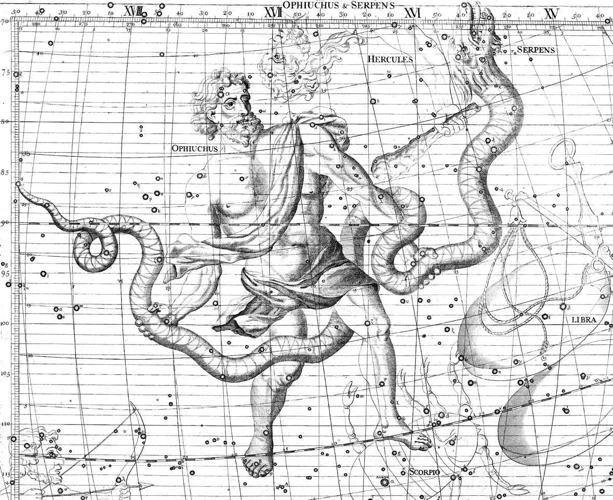
Olmec Mythology is shrouded in mystery, as the Olmec civilization predates written records. Despite this, archaeological evidence and later interpretations provide insight into their belief system. One prominent figure in Olmec mythology is the Were-Jaguar, a shapeshifting deity often depicted as a combination of a human and a jaguar. Considered a powerful and transformative force, the Were-Jaguar symbolized the connection between humans and animals. Another significant entity in Olmec mythology is the Earth Monster, Creator of the Universe. This colossal being, depicted as a colossal, boulder-like creature, was believed to have created the world and all living beings. It represented the natural forces that governed life and the complex relationship between humanity and nature. Additionally, the Feathered Serpent held immense importance in Olmec culture. Similar to the Aztec representation, this deity symbolized transformation and was associated with both the earth and the sky. The Feathered Serpent embodied the concept of duality and the interconnectedness of opposites. Exploring the enigmatic world of Olmec mythology reveals the deep reverence the ancient civilization had for nature and their profound understanding of the fundamental aspects of existence.
1. Were-Jaguar, the Shapeshifting Deity
The fascinating creature known as the Were-Jaguar held a prominent place in Olmec mythology. As the name suggests, this deity possessed the ability to shapeshift between human and jaguar forms, embodying the power and agility of both beings. The Were-Jaguar was believed to be a symbol of both fertility and warfare, serving as a guardian spirit and a formidable warrior. In Olmec art and iconography, this creature was often depicted as a hybrid, with the characteristic features of both humans and jaguars. The Were-Jaguar’s presence can be seen in various Olmec sculptures, where the figure is adorned with jaguar characteristics such as fangs, claws, and distinctive spotted patterns. This shape-shifting deity represented the Olmec people’s connection to the natural world and their reverence for the untamed forces of nature. The enigmatic nature of the Were-Jaguar continues to intrigue historians and researchers, shedding light on the beliefs and customs of this ancient civilization. To learn more about the Olmec civilization and their captivating mythological creatures, check out our article on the origins and spirits of Native American mythology.
2. Earth Monster, Creator of the Universe
In Olmec mythology, one of the most renowned mythical creatures was the Earth Monster, Creator of the Universe. This ancient deity was believed to have the power to shape the world and was essential in the creation of the universe itself. Often depicted as a colossal figure with a gaping, fanged mouth, the Earth Monster symbolized the primordial forces and the immense power of nature. According to Olmec legends, it was this powerful being who molded the earth and everything within it, including humans. The Earth Monster played a central role in the Olmec cosmology, representing the cyclical nature of life, death, and rebirth. This creature was both revered and feared by the Olmec people, as they recognized the profound influence it had on their existence. The mythology surrounding the Earth Monster offers a glimpse into the complex belief system of the Olmecs and their deep reverence for the natural world. To delve further into the captivating world of Olmec mythology and discover more about their fascinating creatures, explore our article on the /american-revolution-birth-of-nation/.
3. Feathered Serpent, Symbol of Transformation
The Feathered Serpent holds a significant place in Mesoamerican mythology, serving as a symbol of transformation and rebirth. Known as Quetzalcoatl to the Aztecs and Kukulkan to the Maya, this divine creature was revered as a powerful deity associated with wisdom, fertility, and the cycles of life. The Feathered Serpent was often depicted as a serpent with vibrant feathers or a combination of serpent and bird-like features. Its image was prevalent in Mesoamerican art and architecture, adorning temples, pyramids, and sacred objects. The belief in the Feathered Serpent represented the duality of nature and the interconnectedness of opposing forces – the earthly and the spiritual, the light and the dark. This mythical creature embodied the transformative power of nature and the cyclic nature of existence. It stood as a reminder of the eternal cycle of birth, death, and rebirth, a symbol of the continuous renewal of life. The Feathered Serpent holds a prominent place in the mythology of Mesoamerica, serving as a source of inspiration and awe for generations to come.
Zapotec Mythology
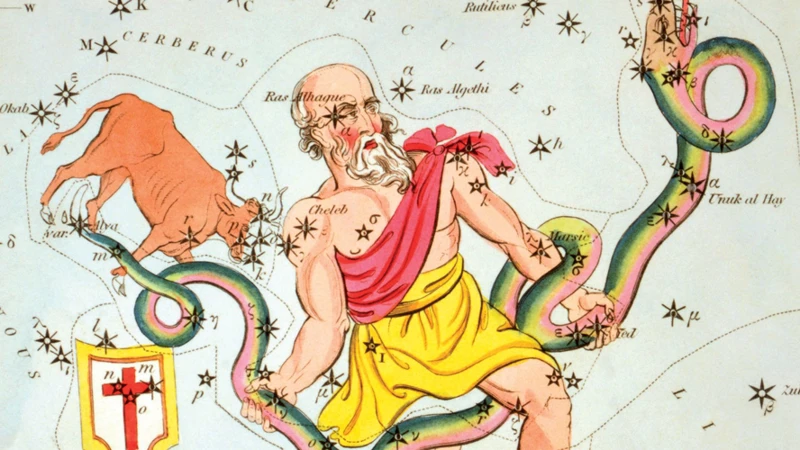
Zapotec Mythology is a fascinating realm filled with unique gods and legendary creatures. One prominent figure in Zapotec mythology is Cocijo, the Rain God. Cocijo was revered as the bringer of rain, an essential element for agricultural prosperity in the Zapotec civilization. Often depicted with a serpent-like body and thunderclouds surrounding his head, he symbolized the power and fertility of nature. Another significant deity in Zapotec mythos is Centeotl, the Maize God. Representing the staple crop of the Zapotec people, Centeotl was associated with fertility, abundance, and agriculture. Depicted with a maize cob on his head and surrounded by plants, he symbolized the vital connection between humans and the earth. Additionally, Pitao Cozobi, the Bird Deity, played a crucial role in Zapotec mythology. As the god of birds, he was believed to have the ability to communicate with the spiritual realm and interpret omens. Pitao Cozobi was often portrayed as a bird-like figure in Zapotec artwork, emphasizing the significance of birds in their culture. These deities and mythical creatures were central to the Zapotec people’s beliefs, reflecting their deep connection with nature and the agricultural cycle that sustained their civilization.
1. Cocijo, the Rain God
Cocijo, the Rain God, held immense significance in Zapotec mythology. This deity was believed to have the power to control rainfall, ensuring fertility and abundance for the crops. Depicted as a fierce and awe-inspiring figure, Cocijo was often portrayed with an elaborate headdress adorned with lightning bolts to symbolize his connection to storms. It was believed that his tears were a source of nourishment for the earth, making him a vital deity for agricultural success. The Zapotec people would offer prayers and sacrifices to Cocijo to seek his favor and ensure a bountiful harvest. The influence of Cocijo in Zapotec society extended beyond agriculture, as he was also associated with purification and cleansing rituals. The Rain God held a prominent place in Zapotec lore and continues to be revered in present-day Zapotec communities where his importance remains steadfast. Exploring the myth of Cocijo provides an intriguing insight into the spiritual beliefs and cultural practices of the Zapotec civilization.
2. Centeotl, the Maize God
Centeotl, the Maize God, held a vital role in the mythology and agricultural practices of the Zapotec civilization. As the deity of maize, Centeotl was deeply revered as the provider of sustenance and the symbol of fertility. The Zapotecs believed that maize was a sacred gift from the gods, and Centeotl embodied the life-giving power of this vital crop. Depicted as a youthful figure adorned with ears of corn on his headdress, Centeotl represented the cycle of growth and harvest. The Zapotecs celebrated Centeotl through rituals and ceremonies, offering prayers and sacrifices to ensure bountiful harvests. Centeotl’s importance extended beyond the material realm, as he was also associated with spiritual nourishment and the sustenance of the human soul. The reverence for the Maize God reflected the central role of agriculture in Zapotec society and emphasized the deep connection between humans and the natural world. The worship of Centeotl represented an acknowledgment of the reciprocal relationship between mankind and the earth, a symbiotic bond that sustained both the physical and spiritual well-being of the Zapotec people.
3. Pitao Cozobi, the Bird Deity
Pitao Cozobi, also known as the Bird Deity, was one of the prominent figures in Zapotec mythology. Often depicted as a vibrant and majestic avian creature, Pitao Cozobi held great significance in the pantheon of Zapotec gods. This deity was associated with the power of the sky and was believed to have control over rain, thunder, and lightning. Pitao Cozobi was worshipped as a protector of crops and played a vital role in ensuring the fertility of the land. The Zapotec people held elaborate ceremonies to honor and appease this celestial being, offering sacrifices and prayers for bountiful harvests. They believed that Pitao Cozobi’s presence was necessary for the prosperity and well-being of their communities. This reverence for the Bird Deity exemplified the deep connection the Zapotec people had with the natural world and their reliance on its abundant gifts. Pitao Cozobi was not merely a mythical creature but a symbol of the delicate balance between humanity and nature that the Zapotec revered.
Conclusion
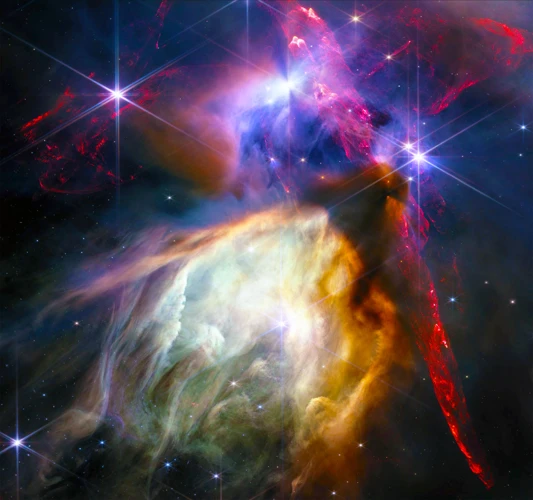
In conclusion, the mythological creatures of Mesoamerica offer a glimpse into the rich and diverse cultures of the Aztecs, Maya, Olmecs, and Zapotecs. These fascinating beings were not simply figments of imagination; they played pivotal roles in shaping the belief systems and worldviews of these ancient civilizations. From the awe-inspiring Feathered Serpents like Quetzalcoatl and Kukulkan to the fearsome deities such as Cipactli and Camazotz, each creature held a symbolic significance and embodied different aspects of nature and life. The mythology of Mesoamerica reflects the profound connection between humans and the natural and supernatural worlds. These mythical creatures continue to intrigue and captivate us, serving as a testament to the enduring legacy of these remarkable civilizations. To truly appreciate the wonders of Mesoamerican mythology, we must continue to explore and immerse ourselves in the stories, legends, and traditions that have been passed down through generations. By delving into the realms of ancient gods and fantastical creatures, we gain a deeper understanding of the rich tapestry of human imagination and the cultural heritage that continues to shape our world today.
Frequently Asked Questions
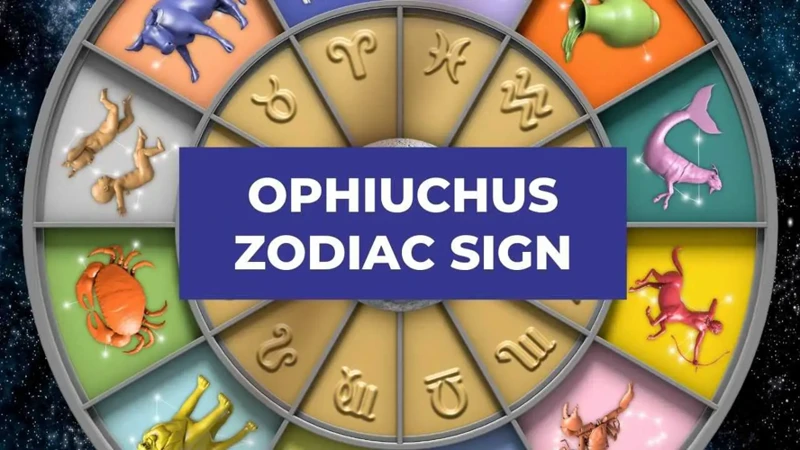
1. What is the significance of Quetzalcoatl in Aztec mythology?
Quetzalcoatl was a revered deity in Aztec mythology, representing the creator god and the bringer of civilization and arts. He was often depicted as a feathered serpent and played a crucial role in Aztec cosmology.
2. Why was Cipactli considered a significant creature in Aztec mythology?
Cipactli, the Crocodile Monster, held great importance in Aztec mythology as it was believed to be responsible for the creation of the Earth. It symbolized chaos and destruction, highlighting the dangers and unpredictability of the natural world.
3. What role did Xolotl, the Dog-headed God, play in Aztec mythology?
Xolotl, the Dog-headed God, served as a guide for souls to the underworld. Associated with lightning, fire, and death, he was a prominent figure in Aztec creation myths and played an integral part in their understanding of the afterlife.
4. Are feathered serpents only found in Aztec mythology?
No, feathered serpents are found in various mythologies worldwide, but they hold particular significance in Mesoamerican cultures like the Aztecs. These serpents represent transformation, wisdom, and the connections between the heavens and the earth.
5. Did the Aztecs believe in other mythical creatures besides those mentioned?
Absolutely! The Aztecs had a rich pantheon of gods and a multitude of mythical creatures. From the fierce Aztec warriors known as Eagle Warriors to the water goddess Chalchiuhtlicue, their mythology was filled with diverse and captivating beings.
6. Were these mythical creatures worshipped by the Aztecs?
Yes, the Aztecs worshipped and revered these mythical creatures as they believed they held immense power and influence over their lives. The gods and creatures of Aztec mythology were the recipients of prayers, rituals, and sacrifices in order to maintain balance and harmony.
7. Is there any archaeological evidence supporting the existence of these creatures?
While there is no concrete archaeological evidence of the existence of these mythical creatures, their depictions and descriptions can be found in Aztec artwork, sculptures, and codices. These representations offer valuable insights into the beliefs and imaginations of the Aztecs.
8. How did the Aztecs pass down their mythology and stories?
The Aztecs relied on various methods to pass down their mythology and stories. These included oral traditions, where knowledge was transmitted through generations by word of mouth, as well as the use of codices and artwork to record and preserve their myths and legends.
9. Can we find references to Aztec mythology in modern culture?
Absolutely! Aztec mythology continues to inspire and influence modern culture. References to these mythical creatures can be found in literature, art, films, and even in popular video games, showcasing the enduring fascination with Mesoamerican civilizations.
10. How does Aztec mythology differ from other Mesoamerican mythologies?
Aztec mythology shares many similarities with other Mesoamerican mythologies, such as the Maya and Zapotec. However, each culture had its unique pantheon of gods and mythical creatures, reflecting their distinct beliefs, history, and geographical influences.
References
Frequently Asked Questions

How many mythical creatures are there in Mesoamerican mythology?
There are numerous mythical creatures in Mesoamerican mythology, with each civilization having its own unique collection of deities and monsters.
What is the significance of mythical creatures in Mesoamerican culture?
Mythical creatures held great significance in Mesoamerican culture as they were often seen as representations of natural forces, celestial bodies, or symbols of power and transformation.
Are there any Mesoamerican mythical creatures that are still worshiped today?
While the original Mesoamerican civilizations no longer exist, some of their deities and mythical creatures continue to be revered in modified forms by certain indigenous communities in Mexico and Central America.
What are some common themes among Mesoamerican mythical creatures?
Common themes among Mesoamerican mythical creatures include serpents, jaguars, birds, and human-animal hybrids, which reflect the deep connection between nature and human spirituality in Mesoamerican cosmology.
Can you provide details on Quetzalcoatl, the Feathered Serpent?
Quetzalcoatl, often depicted as a feathered serpent, was one of the most important deities in Aztec mythology. He represented wisdom, fertility, and the cycles of life and death.
Who is Cocijo, the Rain God?
Cocijo is the Zapotec deity associated with rain and thunder. He was greatly revered by the Zapotec people, who believed that his benevolence was essential for agricultural success.
What is the role of the Were-Jaguar in Olmec mythology?
The Were-Jaguar is a shapeshifting deity in Olmec mythology. It is often associated with fertility and transformation and is believed to have played a role in the creation of the world.
Who is Kukulkan, the Plumed Serpent?
Kukulkan, also known as Quetzalcoatl in Aztec mythology, is a revered deity among the Maya people. He is associated with wisdom, knowledge, and the cycles of time.
What is the story behind Camazotz, the Bat God?
Camazotz is a fearsome deity in Maya mythology, often depicted as a bat. He was believed to dwell in the underworld and was associated with both death and sacrifice.
Can you explain the significance of the Earth Monster in Olmec mythology?
The Earth Monster, also known as the Olmec Dragon, was a powerful deity in Olmec mythology. It was believed to be the creator of the universe and held immense spiritual and cosmic significance.
References
- Three Pre-Columbian Mythical Creatures to Enliven Your …
- Mythical creatures of Mesoamerica and ancient South …






